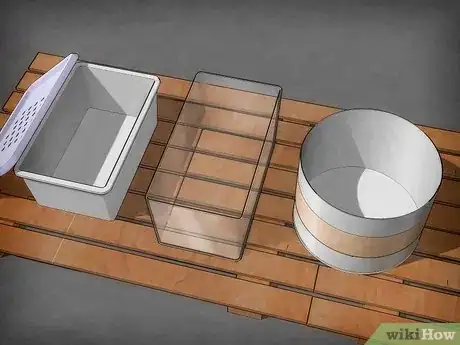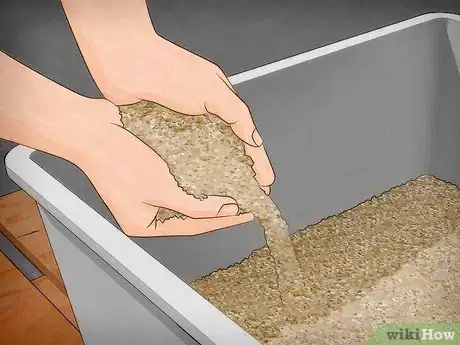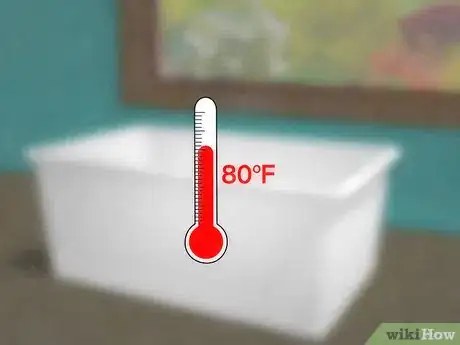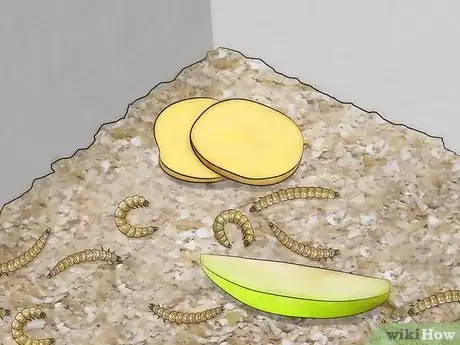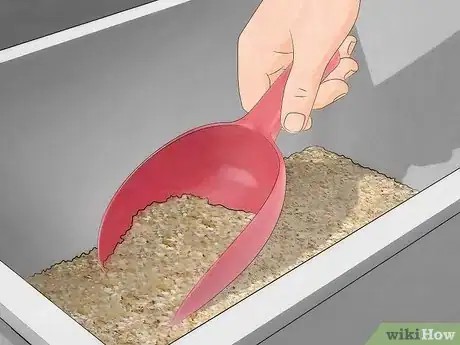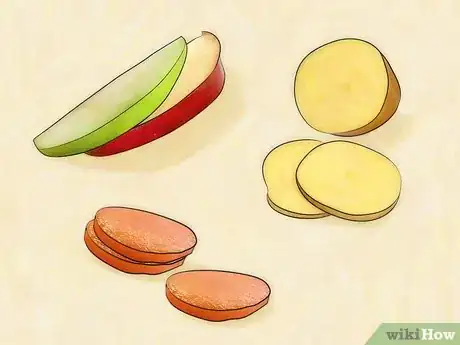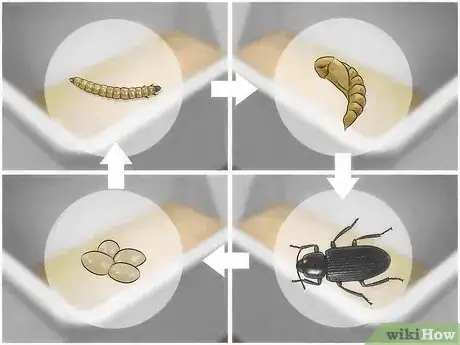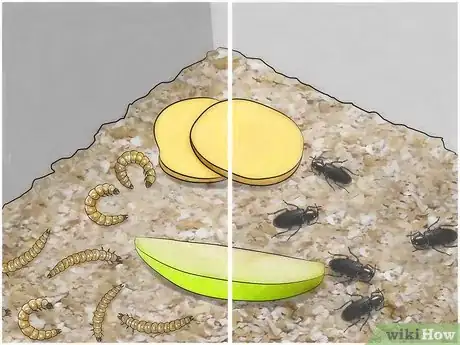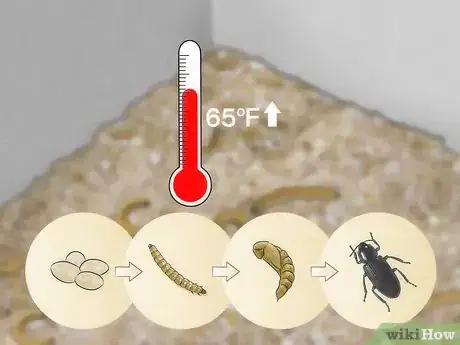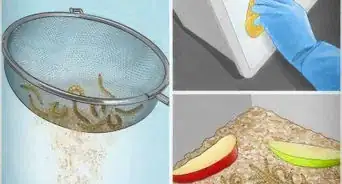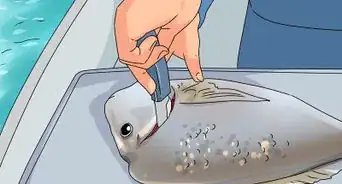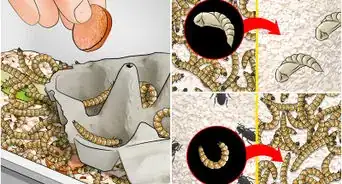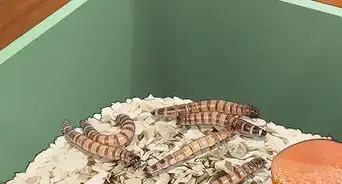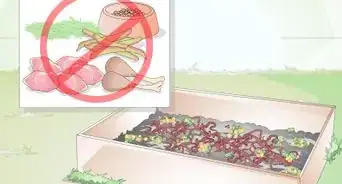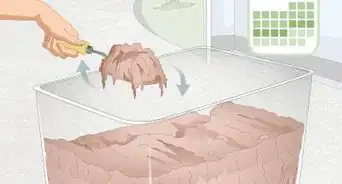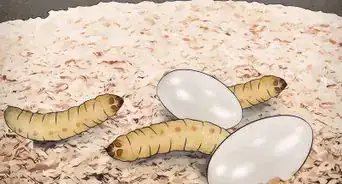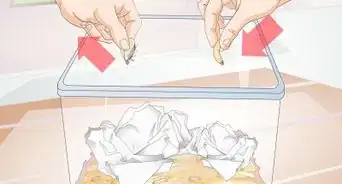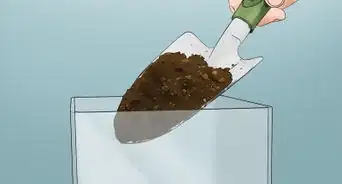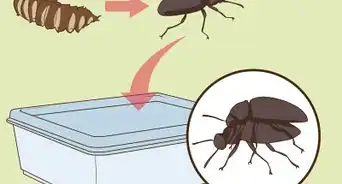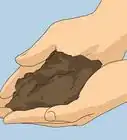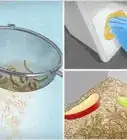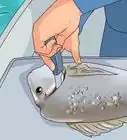This article was co-authored by Samuel Ramsey, PhD. Dr. Samuel Ramsey is an Entomologist and a researcher with the United States Department of Agriculture. Dr. Ramsey has extensive knowledge of symbiosis and specializes in insect disease spread, parasite behavior, mutualism development, biological control, invasive species ecology, pollinator health, and insect pest control. He holds a Bachelor’s degree in Entomology from Cornell University and a Ph.D. in Entomology from the University of Maryland. Dr. Ramsey’s research on bees has enabled researchers to develop targeted control techniques to restore honey bee populations worldwide. He also hosts a YouTube series called “Dr. Buggs.”
wikiHow marks an article as reader-approved once it receives enough positive feedback. This article received 22 testimonials and 93% of readers who voted found it helpful, earning it our reader-approved status.
This article has been viewed 267,432 times.
Mealworms are the early life stage of darkling beetles, and are often used as food for pets such as reptiles, spiders, birds, and even rodents. Aside from that, they also act as an important part of the natural ecosystem, consuming decaying matter and keeping things clean. If you want to keep and maintain healthy mealworms, understanding their feeding habits and providing them with a safe and comfortable environment are important steps to take.
Steps
Housing Your Mealworms
-
1Keep the mealworms in a glass, metal, plastic or wax coated container. You want to be sure they can’t get a grip on the sides of the container you keep them in, as they could likely climb out. Containers with smooth, slippery sides and surfaces are best for keeping the mealworms inside.[1]
- Avoid containers made of things like cardboard, or any containers lined in fabric. These surfaces will be easy for the worms to latch onto and climb up, which could allow them to get out.
- As long as the container is at least 8 centimeters deep and has slippery sides, you can probably get away without putting a lid on it. But, if you want a lid, just make sure you poke small airholes in the top. Try using cheesecloth as an alternative, as this will also help keep other insects out of the container.[2]
-
2Line the bottom of the container. The material you use to line the container with will also act as the mealworms’ food, so you will likely have to add more to make up for what the worms eat. Things like oatmeal, grain cereal like Cheerios, cornmeal, or dog food that has been ground down to crumbs are good options for lining the bottom of the mealworms’ container.[3]
- You can try a mixture of these different items, as well. Use a food processor to grind up larger pieces to make the substrate more consistent in texture and size. You can layer the lining to be about 4 centimeters deep in the container.
Advertisement -
3Keep the container in a warm place. Room temperature is adequate, but about 80 degrees (F) will be more ideal if you plan to breed and increase your number of mealworms. If you live someplace where the temperature and climate are on the more mild side, you could try keeping the mealworms out in a garage.[4]
Feeding Mealworms Properly
-
1Use moist foods to provide the worms with water. Slices or pieces of fruits and vegetables like potatoes and apples work well for this purpose. Potatoes are an especially good option as they take a bit longer to mold and dry out.[5]
- Don’t put any water in the container. Mealworms will crawl into a water dish and end up drowning. Use the fruit and vegetables as a source of moisture and water.
- Switch out dried or molded pieces of fruit and vegetables for fresh ones as needed.
-
2Change the food/bedding every few weeks. You will need to add more food to the container as the worms consume it, but you don’t need to actually change all of the bedding until a few weeks have passed. Keep an eye on it to make sure no mold is growing, and that there is no foul odor.[6]
- You can use a sifter to gently separate the worms from the bedding when you need to change it, or even when you need to remove the worms for any other reason.
-
3Use fruits and vegetables that are less likely to get soggy. If you notice the moist food you provided is making the bedding too wet or damp, change it out for something else. If your container has a lid and you notice the lid is collecting condensation, your container has a bit too much moisture. Try to let a little more air in.[7]
Caring for Mealworms Through Life Stages
-
1Keep different life stages in separate containers. If you plan to keep your mealworms and let them develop into pupae and eventually beetles, make sure to take the pupae out of the container. The beetles and the worms will both eat these if they are left in the container.[8]
- If you don’t plan to keep the mealworms into the next stages of life, keep in mind that they usually remain at the larval (worm) phase for 8-10 weeks. If you purchase the worms and they are already fully grown, you may have less time than that.[9]
-
2Feed each stage the same. Beetles and larvae eat the same thing, so keep refreshing and adding to the food bedding you have already been maintaining, even after the transition between stages. Once the larvae become pupae, they will not eat during this stage.[10]
- If you notice pupae in your container, transfer them into another container that is lined with a paper towel rather than the bedding. This will give the pupae something to hold onto while they transition into their next life stage, which will take anywhere from 6-24 days.[11]
-
3Keep the temperature of the container above 62 degrees (F). Temperatures lower than this can have a negative effect on the reproduction cycle. If you are trying to progress the life cycle and encourage full grown beetles to lay eggs and start the cycle over, make sure they have a warm environment in which to do so.[12]
- On the other hand, if you have a large amount of larvae and want to use them as food for pets, you can refrigerate the larvae in a container with holes in the lid and they will last longer. But, temperatures lower than 40 degrees (F) may cause the worms to die.
Expert Q&A
Did you know you can get expert answers for this article?
Unlock expert answers by supporting wikiHow
-
QuestionHow can I prevent fungi from growing in the container?
 Samuel Ramsey, PhDDr. Samuel Ramsey is an Entomologist and a researcher with the United States Department of Agriculture. Dr. Ramsey has extensive knowledge of symbiosis and specializes in insect disease spread, parasite behavior, mutualism development, biological control, invasive species ecology, pollinator health, and insect pest control. He holds a Bachelor’s degree in Entomology from Cornell University and a Ph.D. in Entomology from the University of Maryland. Dr. Ramsey’s research on bees has enabled researchers to develop targeted control techniques to restore honey bee populations worldwide. He also hosts a YouTube series called “Dr. Buggs.”
Samuel Ramsey, PhDDr. Samuel Ramsey is an Entomologist and a researcher with the United States Department of Agriculture. Dr. Ramsey has extensive knowledge of symbiosis and specializes in insect disease spread, parasite behavior, mutualism development, biological control, invasive species ecology, pollinator health, and insect pest control. He holds a Bachelor’s degree in Entomology from Cornell University and a Ph.D. in Entomology from the University of Maryland. Dr. Ramsey’s research on bees has enabled researchers to develop targeted control techniques to restore honey bee populations worldwide. He also hosts a YouTube series called “Dr. Buggs.”
Entomologist Mealworms do need some humidity, but when it gets too humid, fungi propagate really rapidly. These fungi can actually attack the mealworms themselves and kill them. As you start having dead mealworms mixed in with the oatmeal, it just creates exponential growth of that fungus in the enclosure. If you have a way of measuring the humidity itself, that will help you a lot. There are multiple kinds of humidity meters that are very easy to procure. Most of them measure both humidity and temperature. You can get them online from pet care websites or on Amazon, and they can be very helpful for you maintaining a balance there.
Mealworms do need some humidity, but when it gets too humid, fungi propagate really rapidly. These fungi can actually attack the mealworms themselves and kill them. As you start having dead mealworms mixed in with the oatmeal, it just creates exponential growth of that fungus in the enclosure. If you have a way of measuring the humidity itself, that will help you a lot. There are multiple kinds of humidity meters that are very easy to procure. Most of them measure both humidity and temperature. You can get them online from pet care websites or on Amazon, and they can be very helpful for you maintaining a balance there.
Warnings
- Mealworms turn black when dead. In order to make sure they are healthy, check frequently.⧼thumbs_response⧽
- Handle them with care, and hold them over the container so you won't drop them on the floor.⧼thumbs_response⧽
Things You'll Need
- A plastic, glass, or metal container
- Tool to make holes
- Mealworms
- Fruits and/or vegetables
- Bran/oats, grains, and/or dog food
References
- ↑ http://abigalesedibles.com/mealworm-care/
- ↑ http://animals.mom.me/set-up-mealworm-habitat-1932.html
- ↑ https://mealwormcare.org/breeding/
- ↑ http://www.sialis.org/raisingmealworms.htm
- ↑ https://mealwormcare.org/breeding/
- ↑ http://www.exoticnutrition.com/howtorame.html
- ↑ http://www.sialis.org/raisingmealworms.htm
- ↑ http://abigalesedibles.com/mealworm-care/
- ↑ http://www.sialis.org/raisingmealworms.htm
About This Article
To care for mealworms, keep them in a glass, metal, or plastic container that's lined with food like grain cereal, oatmeal, or cornmeal. Try to keep your mealworms somewhere that's at least room temperature, but aim for around 80 degrees if you can. To give your mealworms water, add moist foods to their container, like pieces of fruit or vegetables. Make sure you give your mealworms new food and water whenever they're running low, and replace the lining in the container every few weeks. To learn how to care for your mealworms through their different life stages, scroll down!
